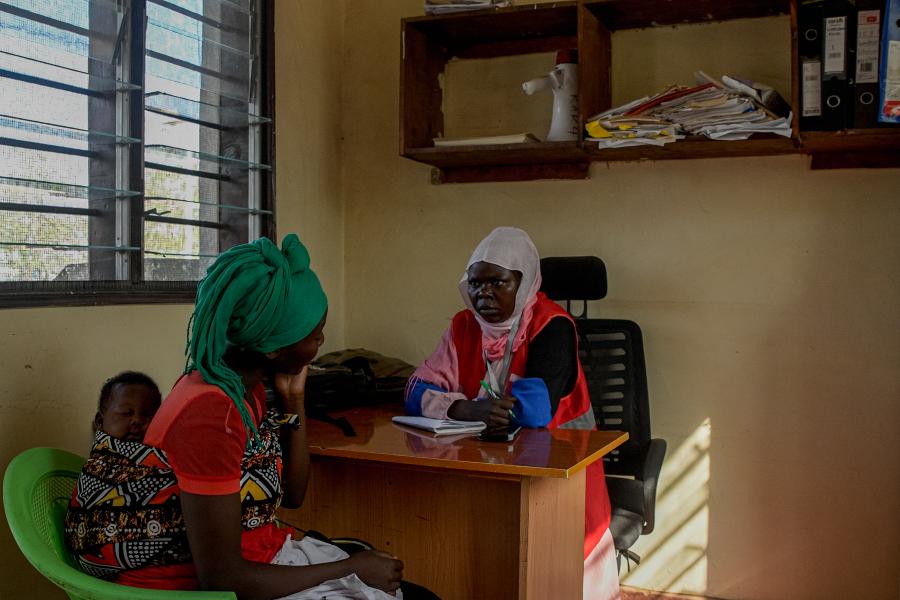Executive summary
By the end of 2022, the region hosted 4.9 million refugees and asylum-seekers and 10.7 million internally displaced people (IDPs). The East and Horn of Africa endured another year of the severe drought that began in 2019, drying up water sources and destroying livelihoods, while the global economic crisis inflated prices of food and fuel. A mix of conflict and climate shocks triggered new displacement, both internal and across international borders.
Ethiopia, Somalia, South Sudan and the Sudan are priority countries for the Secretary-General’s Special Adviser on Solutions to Internal Displacement. In these countries UNHCR worked on implementing the Secretary-General’s Action Agenda on Internal Displacement, where durable solutions and data are the main priorities. UNHCR leads clusters on Protection, Camp Coordination and Camp Management, and Shelter/ Non-Food Items, and helped address internal displacement through community-based protection responses. However, limited funding hampered these efforts.
UNHCR invested in strengthening the prevention and response to gender-based violence, child protection, case management procedures and referral pathways for both IDPs and refugees. It advocated for the inclusion of refugees in national services, especially in protracted situations. UNHCR endeavoured to ensure mainstreaming of services to national systems at the onset of emergencies, in particular in northern Ethiopia, for Congolese refugees arriving in Uganda, and people affected by the drought in Kenya and Somalia. UNHCR increased staffing and training in northern Ethiopia and Somalia to bolster the capacity for responding to gender-based violence in the drought response. It also undertook technical support missions and in-person and remote training on protection from sexual exploitation and abuse and accountability to affected people. In partnership with Governments and NGOs, UNHCR prioritized protection monitoring and life-saving assistance: nutrition, health, food, WASH, emergency shelter and core relief items.
In 2022, almost 1.2 million individuals, or 332,000 households, received cash grants totaling $31 million, mostly via banks and mobile transactions. 86% of recipients were refugees, 9% were internally displaced and 5% were returnees. Most operations used CashAssist, a UNHCR cash management system for better tracking of financial and bank transfers that allows for transparency and easier reconciliation of accounts.
Progress was made on solutions, with nearly 25,500 refugees, mostly Burundians, assisted to return to their countries of origin. 151,300 refugees spontaneously returned to South Sudan, where UNHCR invested in “pockets of hope” to support sustainable returns through area-based programming. UNHCR submitted more than 30,100 individuals for resettlement to 13 countries offering resettlement places. In the same year, 13,300 departed, mainly for the United States of America.
In December 2022, Kenya announced the decision to recognize people of Pemba descent as Kenyan citizens, resolving a long-term problem of statelessness affecting a community that is estimated at 7,000, but may be much larger. UNHCR and its partners supported efforts by the community to collect updated data on its members living in Kenya, along the coastal region. UNHCR will support the Ministry of Interior to translate the decision into action and assist with the provision of legal documentation. UNHCR will also continue engaging with the Government on how to address other statelessness situations in Kenya, including stateless persons of Burundian and Rwandan descent.
Host Governments and others made progress in the follow-up and implementation of pledges made at the 2019 Global Refugee Forum, 41% of which were potentially relevant to countries in the region. A total of 133 pledges were announced by entities from the region, and half of them reported progress or having fulfilled their pledges by the end of 2022.
UNHCR engaged with regional institutions on the objectives of the Global Compact on Refugees, supporting the development of the East African Community’s Regional Refugee Management Policy and activities under the IGAD Support Platform and its Nairobi Process. UNHCR and the European Commission’s Directorate-General for International Partnerships also developed a regional programme to support the IGAD-UNHCR 2023-2030 Solutions Initiative for the Sudan and South Sudan. This regional programme will assist UNHCR in collecting quality data and evidence, building partnerships, and pursuing solutions together with displacement affected communities.
